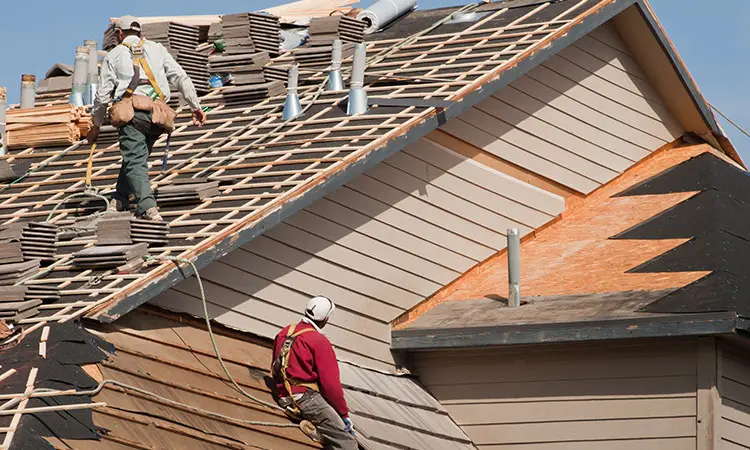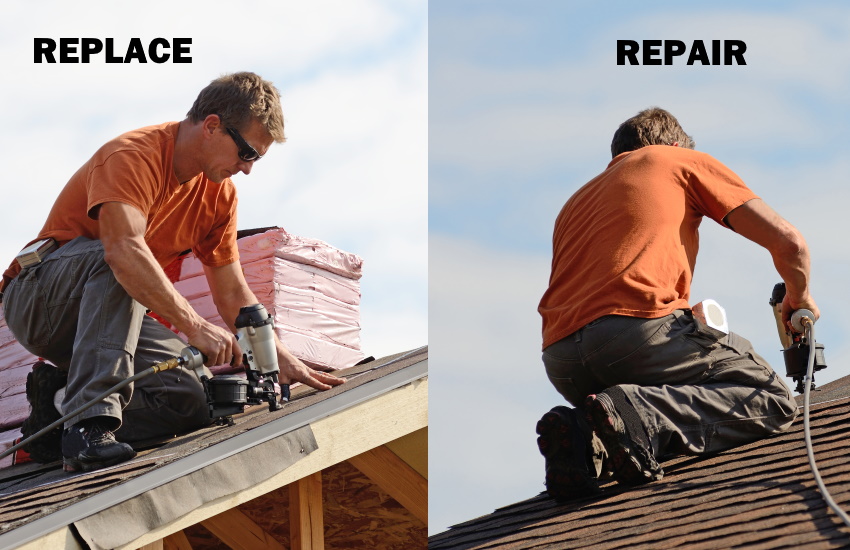Roof Repair Oahu: Quick and Affordable Roof Repairs Near You
Roof Repair Oahu: Quick and Affordable Roof Repairs Near You
Blog Article
Recognizing the Various Sorts Of Roof Coverings: A Comprehensive Overview for Homeowners
With a range of alternatives-- ranging from the standard gable to the contemporary flat-- each type presents special advantages and difficulties that need to line up with the home owner's details needs and environmental factors to consider. As we explore the details of various roofing types, it becomes evident that one dimension does not fit all; the ideal choice might amaze you.
Gable Roofs
Saddleback roofs, defined by their triangular form, are among one of the most prominent roof covering styles as a result of their simpleness and effectiveness in losing water and snow. This design includes 2 sloping sides that satisfy at a ridge, enabling reliable drainage and lessening the risk of water build-up. The high pitch commonly connected with saddleback roofs boosts their capacity to deal with heavy precipitation, making them appropriate for numerous environments.
In addition to their functional benefits, saddleback roofs provide visual versatility. They can be adapted to various building designs, from typical to modern homes. The style can also suit additional functions such as dormer home windows, which enhance all-natural light and air flow in the attic room area.
Additionally, saddleback roofs provide adequate room for insulation, adding to power performance. Homeowners can pick from a range of roof covering products, consisting of asphalt tiles, metal, and ceramic tiles, additionally boosting modification alternatives.
Regardless of their advantages, gable roofs may require additional support in areas prone to high winds or heavy snowfall. Generally, the saddleback roof remains a popular option due to its mix of performance, resilience, and aesthetic appeal.
Apartment Roofs
Level roofing systems are commonly identified for their minimalist design and practical applications, specifically in business and commercial setups (oahu roofing). These roofings feature a straight or almost straight surface area, which permits simple building and versatile room application. While they might do not have the aesthetic allure of pitched roof coverings, level roofings provide numerous benefits, especially in city settings where optimizing space is crucial
Among the primary advantages of level roofing systems is their accessibility. House owners can utilize the roof covering area for different objectives, such as rooftop yards, terraces, or solar panel installments. Furthermore, level roofing systems are generally extra cost-efficient to maintain and set up contrasted to their sloped equivalents, as they call for fewer products and labor.
Common materials utilized for level roofs include built-up roof (BUR), customized asphalt, and single-ply membrane layers, each offering unique advantages. On the whole, level roofs offer as a adaptable and functional choice for many property owners and companies alike.
Hip Roof Coverings
Hip roof coverings are identified by their sloped sides that merge on top, developing a ridge. This layout stands out from gable roofs, as all 4 sides of a hip roof covering incline downwards toward the wall surfaces, offering a more stable framework. The angle of the inclines can vary, enabling adaptability in architectural looks and performance.
One of the primary advantages of hip roof coverings is their capacity to endure heavy winds and adverse weather problems. The sloped surfaces make it possible for much better water drainage, decreasing the threat of leakages and water damage. In addition, hip roofing systems provide enhanced attic room area, which can be utilized for storage and even exchanged livable locations.
Nonetheless, building a hip roof can be more expensive and complex than less complex roofing system kinds, such as gable roofings. The additional product and labor associated with developing the slopes and ensuring proper structural integrity can cause higher costs. Regardless of these downsides, numerous homeowners favor hip roof coverings for their toughness, aesthetic appeal, and capacity for power efficiency.
Mansard Roofings
Mansard roof coverings, usually recognized by their special four-sided style, attribute two inclines on each side, with the reduced incline being steeper than the upper. This architectural design, stemming from France in the 17th century, is not just aesthetically attractive however useful, as it takes full advantage of the usable space in the upper floors of a structure. The high lower incline permits even more clearance, making it a suitable option for attic rooms or loft spaces, which can be converted into living areas.
Mansard roofs are characterized by their adaptability, suiting numerous architectural designs, from typical to modern-day. They can be created with various products, including asphalt roof shingles, slate, or metal, offering house owners with a series of options to suit their preferences and budget plans. Furthermore, the style allows for the assimilation of dormer home windows, improving all-natural light and ventilation in the upper levels.
Nevertheless, it is important to consider the potential downsides. Mansard roofs might need more maintenance as a result of the intricacy of their layout, and their steep slopes can be challenging for snow and rain runoff. In general, mansard roofing systems combine elegance with usefulness, making them a preferred choice among homeowners looking for unique architectural attributes.
Dropped Roofings
As property owners increasingly look for simplicity and functionality in their building styles, shed roof coverings have actually become a preferred option. Characterized by a single sloping airplane, a shed roofing provides a minimalist visual that complements numerous home styles, from contemporary to rustic.
One of the key advantages of a shed roof is its simple building, which frequently equates to lower labor and material costs. This style permits efficient water drainage, reducing the danger of leakages and water damages. Additionally, the upright incline provides adequate room for skylights, boosting natural light within the inside.
Shed roof coverings additionally provide versatility in terms of use. They can be properly integrated into additions, garages, or outside frameworks like sheds and structures. Furthermore, this roofing system design can fit numerous roof products, consisting of metal, asphalt tiles, or also green roof coverings, straightening with green initiatives.
However, it is necessary to take into consideration regional climate read here conditions, as heavy snow loads may Continued necessitate modifications to the roofing's angle or framework. Generally, dropped roofings provide a sensible and visually pleasing choice for house owners seeking to make the most of capability without compromising design.
Verdict


Gable roofs, defined by their triangular form, are among the most preferred roof designs due go to website to their simpleness and effectiveness in dropping water and snow. oahu roofing. The high pitch typically linked with gable roofings enhances their ability to manage hefty rainfall, making them suitable for different environments
While they might do not have the aesthetic allure of pitched roofing systems, level roof coverings offer various benefits, specifically in city environments where making the most of area is vital.

Report this page